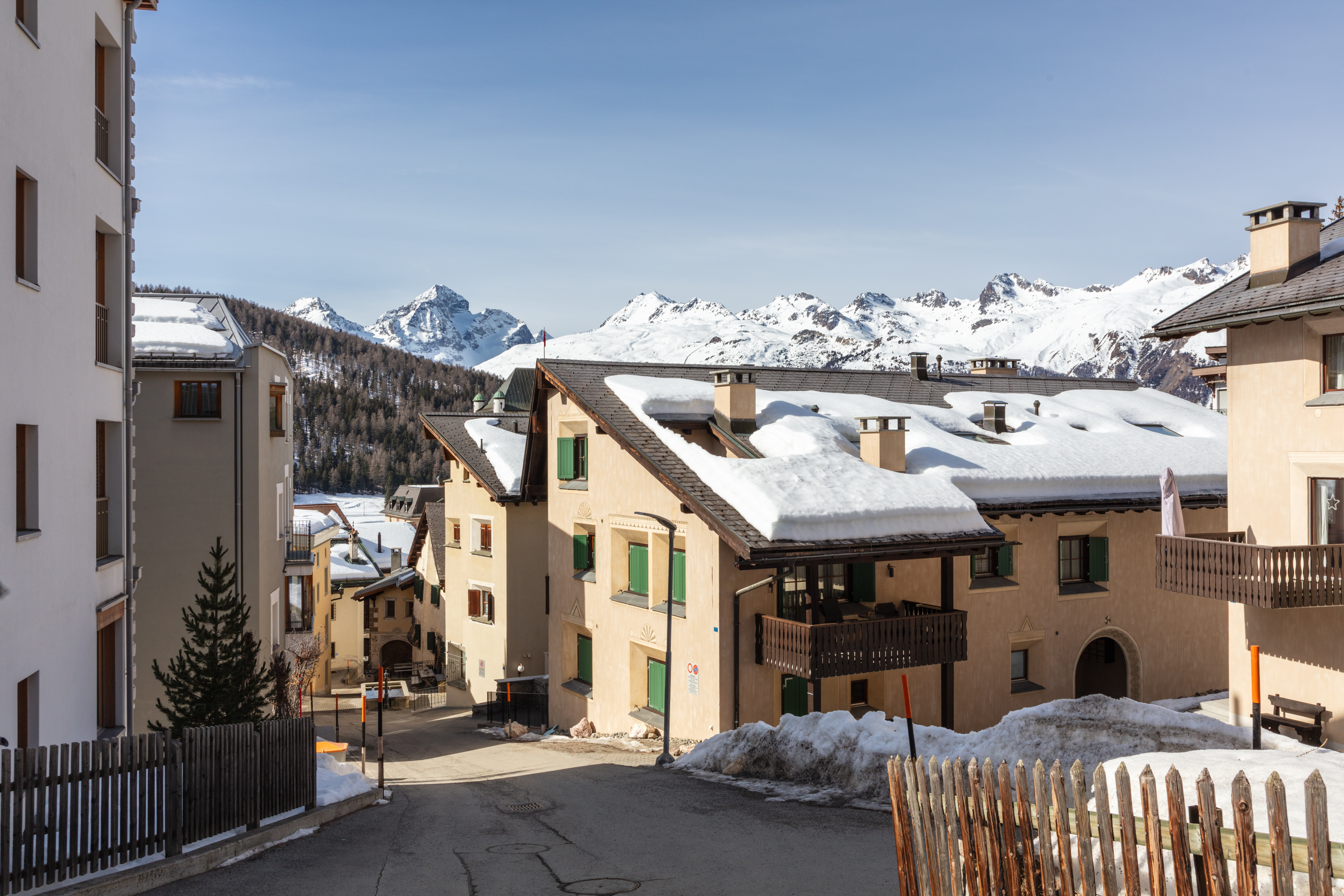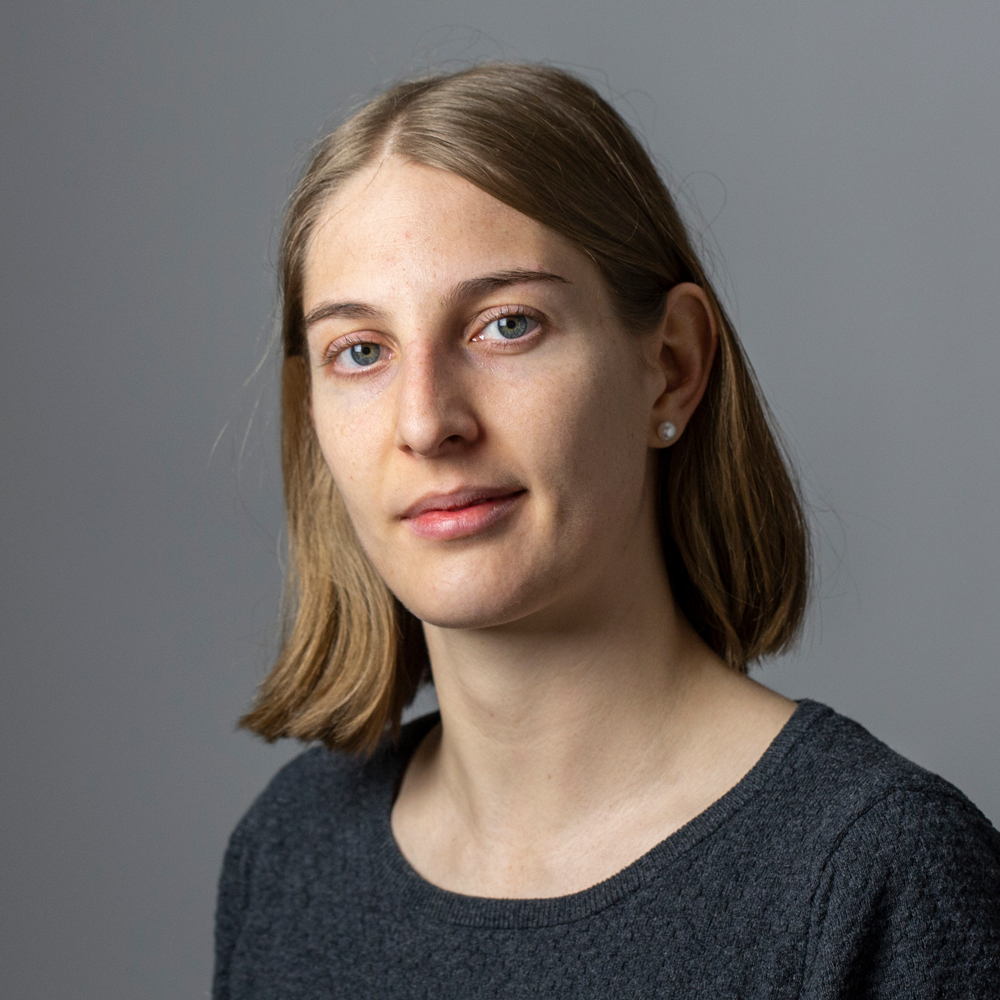
Locals driven out by luxury homes in Swiss mountains

In the mountain village of Pontresina, near the upscale resort of St Moritz, secondary residences now account for 58% of all housing. Long-time inhabitants are having to leave the valley, as they cannot find affordable housing.
“We’ve just been turned down for another flat. It’s so discouraging. We’ve been looking for a new, affordable place to live for over a year now, but keep on drawing a blank,” says Marcel Schenk, a mountain guide in Pontresina, a village with just over 2,000 inhabitants in the canton of Graubünden, in eastern Switzerland.
Schenk, a father of three young children, lives with his family in cramped conditions in a two-and-a-half room flat. But they are unable to move out. Many other people are in the same boat, says the 40-year-old, who has lived in the village for 18 years. “We get contacted by acquaintances who want to take over our lease once we’ve gone,” he says. “But we’re nowhere near finding anywhere to go to.”

Pontresina – in the Upper Engadine valley, just a stone’s throw from the famous alpine resort of St Moritz – is in the grip of an unprecedented housing crisis. It is a phenomenon that is affecting all mountain tourist areas in Switzerland, particularly in the cantons of Bern, Valais and Graubünden.
According to the Graubünden Economic Forum, there is a shortfall of nearly 2,500 housing units in the mountains of Graubünden alone. On social media, appeals by families desperately looking for a flat or house are shared thousands of times, most often to no avail.
Covid crisis partly to blame
It is much more advantageous for real-estate developers to offer luxury properties, which they can rent out or sell at very high prices to people coming from outside. For locals, finding affordable housing has become a real nightmare.
Families are often forced to look far beyond their neighbourhoods, and even outside tourist areas altogether, in order to find lower prices. At best, they can relocate to rental complexes on the outskirts of the village. The local life that gave the resort its charm is thus gradually fading.
The Covid pandemic boosted demand for second homes, which now account for 58% of housing in Pontresina. “People of a mature age have come from all over Switzerland to live here, either to telework or for early retirement. This influx has accelerated the departure of families with young children, who are being squeezed out by new arrivals with greater purchasing power,” explains Nora Saratz Cazin, mayor of Pontresina and member of the centre-right Liberal Green Party.
This has led to an increase in the number of “cold beds”, for the new owners are reluctant to rent out their property while they are away.

Perverse effects of the Weber initiative
This situation is partly due to the unintended effect of laws that were originally intended to protect local communities and landscapes from real-estate speculation. In 2012, the Swiss people voted in favour of the Weber initiative, according to which no more than 20% of the total number of residential units in a municipality may be used as second homes.
There is, however, a loophole in the application of the text. The 20% limit refers to habitable floor area. But there is nothing to prevent existing buildings from being converted into secondary residences. To meet ever-increasing demand, ever more ordinary homes are being turned into luxury properties that are inaccessible to villagers.
Another legislative change has complicated matters further. The 2021 revision of the Spatial Planning Act aimed to increase the density of built-up areas, in order to avoid encroaching on natural landscapes.
“These two laws are having fatal consequences for our villages [because] no provision has been made to protect the primary residences” of inhabitants, reads the website of the Anna Florin association, which encourages and supports the municipalities of the Lower Engadine in their struggle against the pressure of the second-home property market.
Retired villagers forced to leave the valley
The repercussions are clear and follow a now well-identified pattern. “The historic houses of the Engadine are being sold off to wealthy buyers and turned into holiday homes or places for early retirement,” the association explains.
In the villages, the older generation is gradually dying out. The heirs, for want of financial resources, are often obliged to sell the family home to property funds or developers. They then have no option but to move away from their valley, making way for rich city-dwellers in search of nature.
The fate of Chesa Faratscha, three beautiful historic buildings located on the edge of Pontresina, illustrates this sad spiral of events. In 2022, the residents were evicted from the homes they had occupied all their lives. Formerly owned by Swiss Post, the buildings were inhabited in particular by retired post office employees and their families.
Two years ago, the property was sold, via the pension funds, to the Zug-based firm Neue Haus. The new owner won the property auction with the intention of turning it into an upmarket address. Renovation work is currently underway. Meanwhile, the tenants on the lowest incomes were unable to find flats nearby. All the retirees have had to leave the valley, severing ties with the place where they spent their whole lives.

Developers defend their position
Andry Niggli, director of the real-estate company Niggli & Zala Immobilien, also heads the Upper Engadine Property Owners Association. He believes that the housing crisis can be resolved without introducing proactive measures to help local people. “The authorities just need to use planning tools to encourage the creation of primary residences”, he says.
According to Saratz Cazin, however, this will not be enough. The mayor of Pontresina would like second-home owners to spontaneously make their properties available to local residents. She is looking for measures to encourage them to do this.
Niggli is not in favour of this idea. He is convinced that the problems will sort themselves out. “If only half of all the projects planned in the Upper Engadine were implemented, there would be enough housing for everyone,” he says.
Villagers rally together
Meanwhile, the residents of Pontresina are taking action. A group called “PontreViva” was set up at the beginning of the year to launch a public debate. Ursin Maissen, the director of the local tourist office, is pleased with the response to this initiative. A third of residents took part in the participatory survey.
The tacit aim is to find solutions on a consensual basis between the occupants of second homes and local residents. Maissen remains upbeat: “In our village, people are ready to discuss things democratically in order to find measures that suit all parties.”

As for the mayor, she is calling for greater flexibility in applying the existing regulations to advance the villagers’ cause. Indeed, there are many more legal requirements on top of the laws on second homes and spatial planning. The accumulation of rules sometimes leads to absurd situations on the ground.
Thus, in the centre of Pontresina, an inn has fallen into disuse for lack of investors. Yet, by law, hotel facilities cannot be converted into housing.
Greater legal flexibility needed
“A more flexible legal framework would enable us to respond better to local realities,” concurs Marcus Caduff, in charge of economic affairs in the Graubünden cantonal government and member of the Centre party. The authorities are increasingly aware that something must be done to tackle the housing crisis. Various measures are currently being developed.
The politician is working to strengthen housing support for people on low incomes. New subsidies for the purchase or renovation of property are being considered. The authorities also want to encourage the construction of public housing by offering low-interest loans.
The square in front of Pontresina town hall is covered in chalk drawings done by children. “There is a school right next door. If families have to move away from the centre, it will be closed down,” says the mayor, Saratz Cazin. “If we want to keep our village alive, we must act now.”
Edited by Samuel Jaberg. Adapted from French by Julia Bassam/gw
Do you want to read our weekly top stories? Subscribe here.

More
Pontresina becomes village of the dammed

In compliance with the JTI standards
More: SWI swissinfo.ch certified by the Journalism Trust Initiative

































You can find an overview of ongoing debates with our journalists here . Please join us!
If you want to start a conversation about a topic raised in this article or want to report factual errors, email us at english@swissinfo.ch.